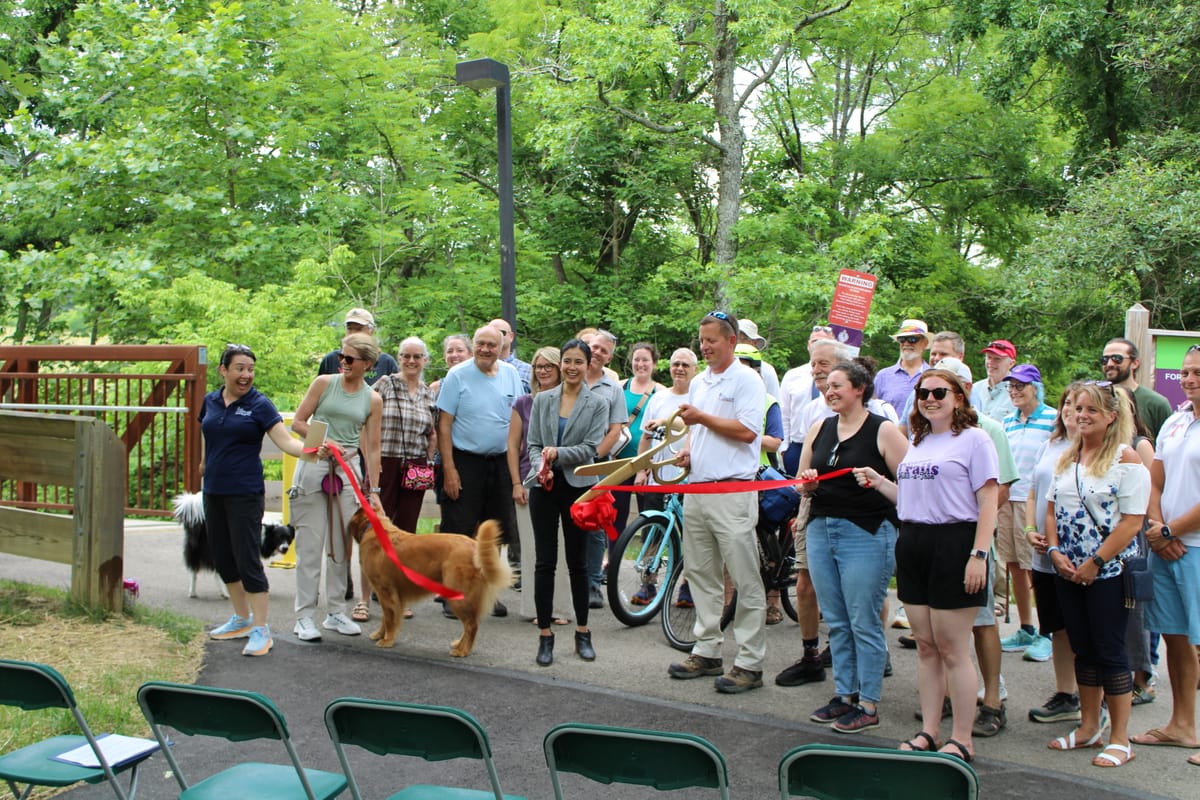Oxford’s Climate Action Plan: One year later
Last September, Oxford passed its first-ever Climate Action Plan. Since then, the city has worked to meet its goal of achieving carbon neutrality by 2045.

When Oxford City Council adopted its climate action plan in September 2023, the city committed to the goal of achieving carbon neutrality by 2045.
“We are taking our commitment to climate seriously,” Reena Murphy, Oxford’s sustainability coordinator, said, “and it’s really exciting to know what a small city can do.”
Murphy said Oxford was the second city in the southwest Ohio/northern Kentucky region to adopt a climate action plan, behind Cincinnati. One year later, Oxford has made progress on some of its goals, but it still has more work ahead to meet its carbon neutrality date in just 21 years.
History
In 2019, Oxford joined the Global Covenant of Mayors for Climate & Energy. One of the requirements was for the city to create a plan for reducing emissions, which led to the formation of the climate action steering committee in 2020.
The committee began developing a climate action plan in February 2022, outlining projects and strategies to mitigate climate change and transition Oxford into a more energy-independent city.
“This plan is something that is a continuation of things we have already been doing, and in addition to some new goals,” Murphy said.
The plan has two parts: the mitigation plan and the resilience plan. The mitigation plan focuses on reducing carbon emissions and becoming a zero-waste community. The resilience plan addresses how to prepare for the impacts of climate change by developing programs and infrastructure to increase the city’s ability to adapt.
By partnering with organizations such as Green Umbrella and state and regional governments, Oxford has been able to start new initiatives to achieve its goal.
“They designed us to be a, what’s called a high level steering committee, and that means we set and think about lofty goals, some of them really perhaps unreachable in the decade [type of] goals,” Mark Boardman, a committee member, said. “So these partnerships are important steps to achieve the longer term goals of zero carbon.”
Progress this past year
Much of the city’s sustainability work has focused on prioritizing renewable energy and waste management, Murphy said.
“Energy is the largest sector, so we are prioritizing energy pretty heavily, because that is an opportunity for us to reduce our emissions and also increase the resilience of our community,” Murphy said. “If we are less reliant on the larger grid, our community is more resilient in extreme weather and things like that.”
To meet its energy goals, Oxford has installed solar panels at a maintenance facility in one of the cemeteries. The city has also plans to partner with developers to put a solar installation on its closed sanitary landfill, though the current developer’s option to lease the land expires Sept. 21.
This year, Oxford replaced more than 600 street lights with more energy-efficient LEDs to reduce its energy consumption. Based on a 2019 emissions inventory highlighted in the plan, more than 5% of the Oxford government’s current emissions come from street lights and traffic signals.
Other goals highlighted in the plan include making walking and biking safer to reduce energy consumption in transportation and becoming a zero-waste community. The Oxford Area Trail System has been a major initiative to encourage walking and biking throughout the community, with Phase Three completed this summer and Phase Four almost done now.
Looking ahead, the city is looking to install solar panels on other municipal buildings, as outlined in the proposed 2025-2029 Capital Improvement Plan. City staff is also aiming to install electric vehicle charging stations with grant support and hold zero-waste events at city facilities. The city also plans to develop benchmarks to track its emissions and progress toward climate goals.
Although the city has ambitious plans, it faces challenges, such as community outreach and implementation hurdles.
“We can’t be doing anything too fast, we can’t be so far ahead with what the community is able to follow that we leave people behind,” Boardman said. “It’s got to be done incrementally.”
Once a venue is confirmed, the city will host an electrification and efficiency fair in late October. At this event, residents can meet with clean energy vendors and learn about what they can do to contribute to a green future.
“I hope that our long-term impact is that we show that small cities can do our part,” Murphy said. “There is always something to be done to make our community more sustainable, more environmentally equitable, and there’s always something to be done with energy efficiency that saves our community members money as well.”
Murphy and Boardman said they hope Oxford can be seen as a model for sustainability in the years to come.
“It’ll help keep Oxford vibrant in the 2030s, 2040s, if we can follow the Climate Action Plan,” Boardman said. “People will come here to live, they will come here to recreate, they will come here to be educated and to educate. I think we could be kind of a mecca of healthy living.”




